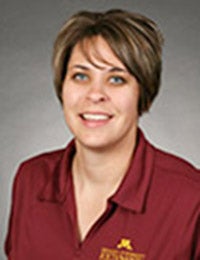Which is better, quality or quantity?
Published 9:00 am Sunday, February 28, 2016
Guest Column by Megan Thorson
Which is more desirable, quality or quantity? The MN 4-H program has been researching this issue. Research has shown that a child who has a poor experience in a poorly designed or delivered program has more harm on that child than if they did not participate at all. Knowing this, MN 4-H has been training and designing programming around quality.
Current research on youth programs tell us quality matters. High quality youth programs are linked to a positive impact on the development of young people. Conversely, youth in poor quality programs are worse off than some youth in self-care. Quality can also be measured. Observational tools measure relationships, environment, engagement, social norms, skill building opportunities and program structure. We, as in youth programs, don’t have enough quality. Youth organizations need to invest resources in improving quality in order to achieve desired impacts on youth.
A few years ago, MN 4-H Youth Development invested in an approach aimed at building staff and volunteer capacity to observe, measure and coach program quality. While other tools exist for measuring quality in youth programs, the Youth Program Quality Assessment has undergone the most rigorous reliability and validity testing to date. Quality was defined in the Weikart Center’s Youth Program Quality Assessment tool, which focuses on four large areas: safe environment, supportive environment, interaction and engagement.
Safe environment is the base of all quality gatherings. This includes a safe space to meet. Are their emergency procedures posted, fire extinguisher available and a first aid kit visible and available? This area also consists of nutrition. What are some healthy food and drink options that can be offered?
In a supportive environment youth should be actively engaged, the atmosphere is welcoming and youth build skills. This area focuses on encouraging questions and comments during skill building activities by program leaders, as well as program leaders resolving conflicts appropriately.
In the interactive environment youth have opportunities to develop a sense of belonging. They are able to participate in small groups, practice leadership skills and also have opportunities to partner with caring adults.
In an engaged environment, youth plan, make choices and reflect. Are their open-ended ways to include all youth in the planning? Are youth involved in making choices while adults step back and remain a quiet resource? Do youth reflect in some way? These elements lead youth to higher levels of learning with their projects and activities. Youth programs should include the plan, choose and reflect in everything they do in a program.
The Youth Work Institute and MN 4-H Program at the University of Minnesota Extension Center for Youth Development has been working on assessing and improving our 4-H clubs and 4-H experiences using the Weikart Center’s Youth Program Quality Assessment model. Minnesota 4-H as well as Freeborn County 4-H is invested in efforts to improve the quality of the program experience through systematic staff and volunteer training and coaching. 4-H Clubs in our county have been assessed using this model, and the clubs can focus on just one or two areas to improve on and also see which areas they are doing well in!
Other youth organizations can get trained using the Youth Program Quality Assessment model through the Youth Work Institute through the University of Minnesota. Other youth programs can also get assessed in quality using this model from 4-H staff who are trained to be external assessors.
For more information on quality in youth programs, you can visit the Youth Work Institute, University of Minnesota Extension Or the Weikert Center for Youth Program Quality.
Megan Thorson is a County 4-H program coordinator with the University of Minnesota Extension Service for Freeborn County.




